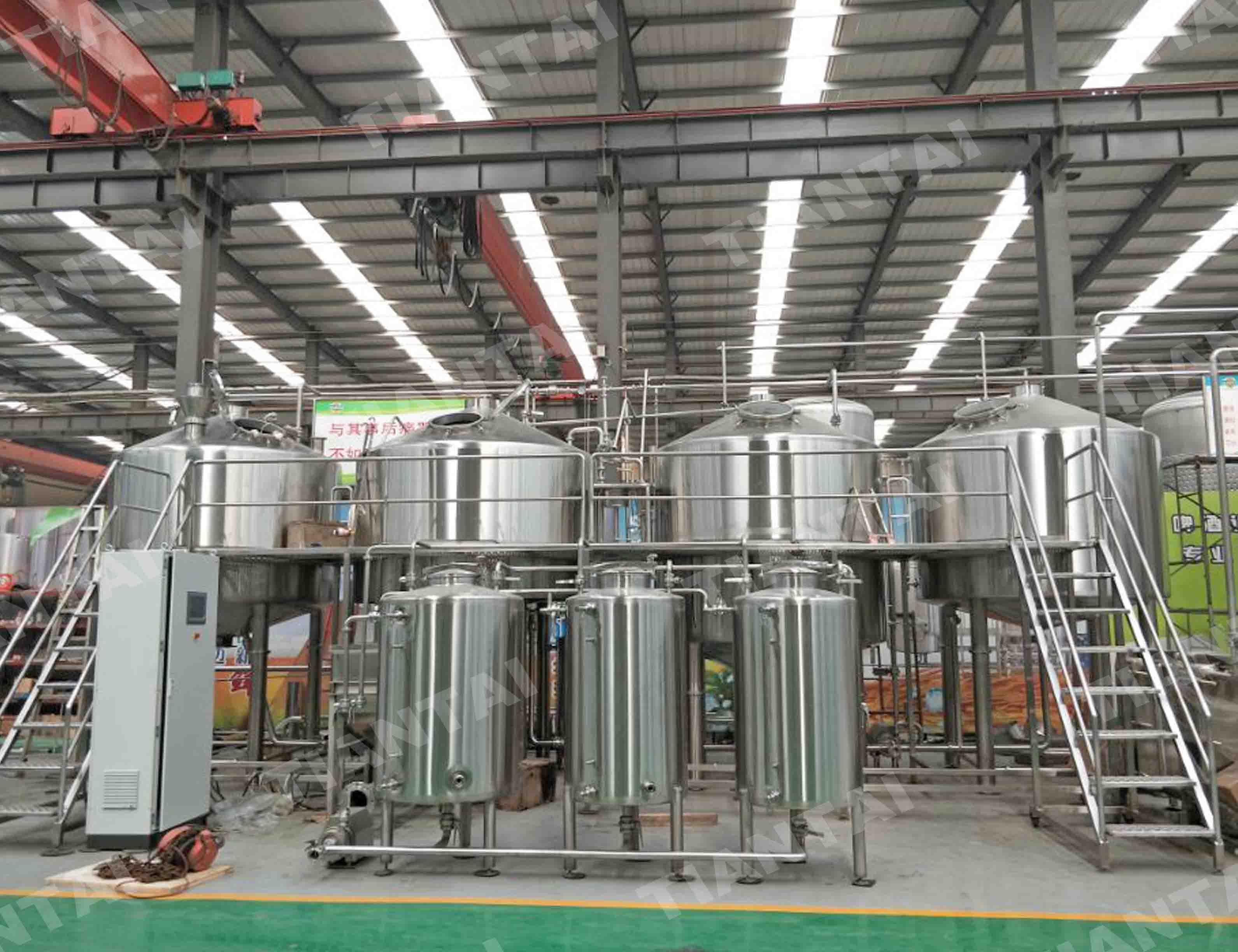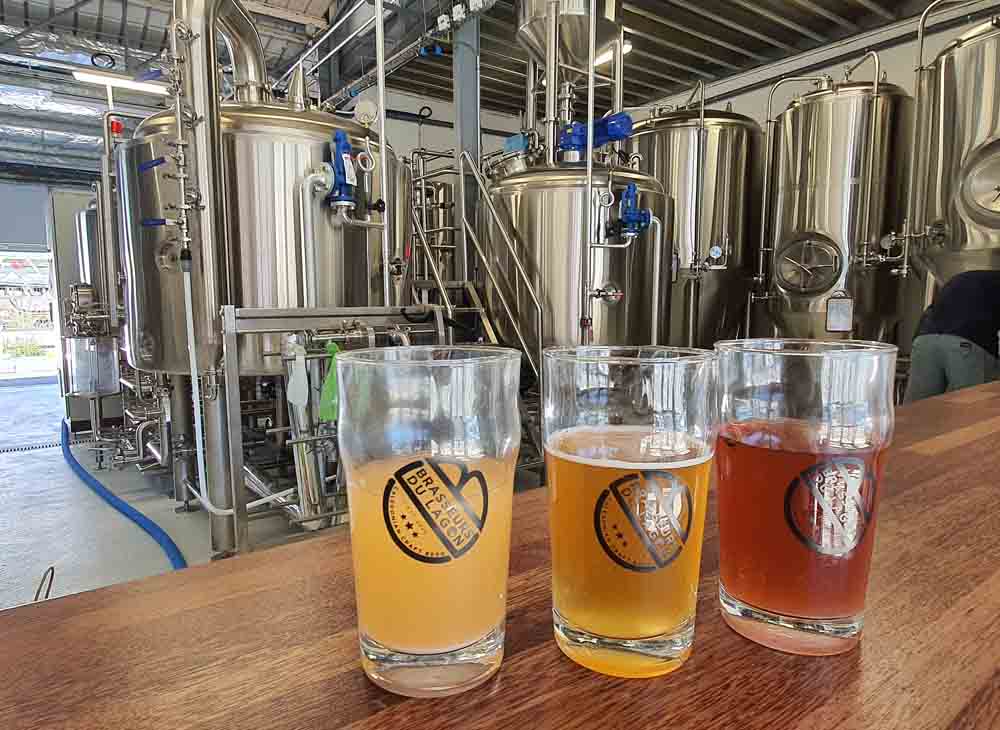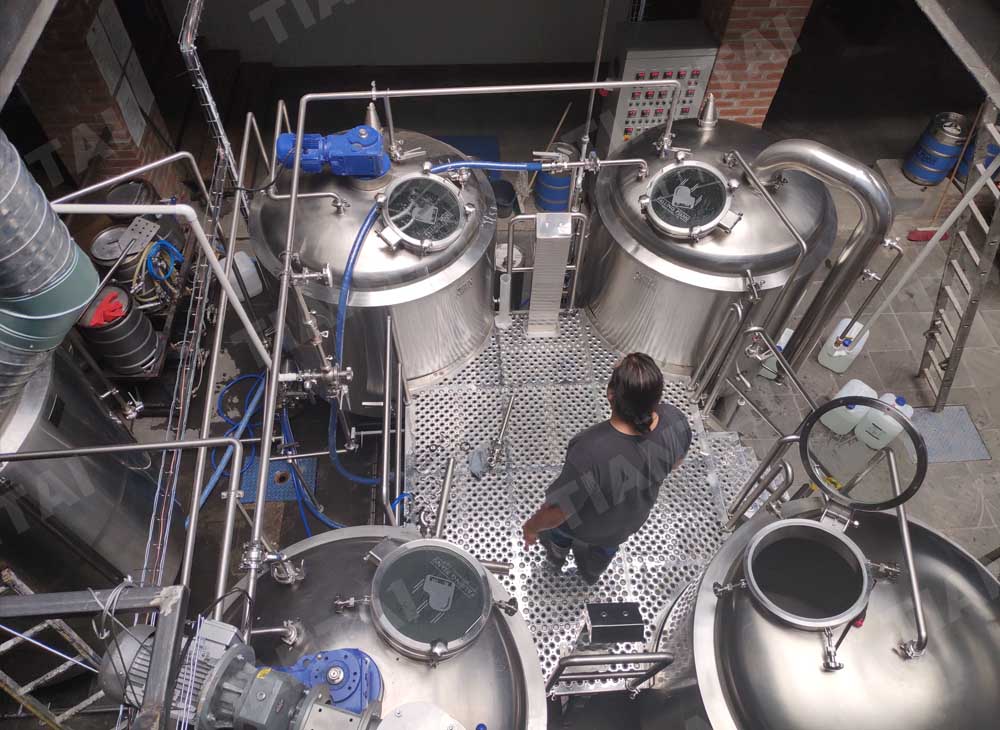How to Lauter for a Highest Extract Efficiency?
- Jan 20, 2022
- 54
- tiantai
Temperature as well as pH.
The procedure of washing the grains includes mindful law of temperature level and also pH. Temperature is very important due to the fact that sugars are a lot more soluble at higher as opposed to at reduced temperature levels, which means better removal effectiveness. The suitable lauter temperature is in between 168 ° F as well as 176 ° F (76-- 80 ° C).
The pH degree is essential due to the fact that the majority of water supplies are alkaline; the a lot more you lauter, the a lot more the pH of the sweet wort will certainly rise towards alkalinity. Generally, mash pH is in the 5.2-- 5.7 range prior to lautering. As you add water to the mash, the pH progressively increases.
The mash is an efficient buffer system, however, standing up to changes to the pH and actively working to maintain the pH down in the 5.0 array. At the begin of lautering the mash is a strong barrier, however as the sparge water weakens it the mash's buffering capacity reductions and quick pH adjustments can occur.
.jpg)
Lautering, Step by Step.
Lautering a typical homebrew set of 10-- 15 girl usually lasts between 60 and 90 min. Lautering for much less than 1 h is quite rare and also might cause lower extract rates.
Some brewers lauter in a lauter tun different from the mash tun; some make use of a mixed mash-lauter tun. In the British system of developing with highly modified malts and also a single infusion mash, as an example, the mash and lauter tuns are one vessel. Action or decoction mashing is normally done separate from the lauter tun, because these techniques of mashing commonly need the enhancement of warm as well as mixing of the mash.
If you use a mash tun different from the lauter tun, the first step in lautering is the physical transfer of the mash. When using a different lauter tun, it is essential to cover the incorrect bottom with preheated water. This water is called structure water as well as supplies a sort of assistance that avoids the first force of mash transfer from blocking the false bottom. The structure water additionally aids to pre-heat the lauter tun, which helps in preserving the final mash temperature.
The length of the recirculation period varies as a function of tun layout, malt option, as well as mashing programs. In the majority of home makers' tuns, the recirculation period lasts 10-- 20 minutes. In many business tuns it takes much longer.
It is crucial to very carefully keep an eye on the price of discharge from the tun; a slow-moving runoff will aid make the most of extract efficiency. The majority of brewers aim to keep the liquid degree in the tun over the top of the grain bed to stay clear of an inadequate drainage.
This can be achieved by making use of a ladle, a sprinkler device as in the Phil's Lauter Tun, or an easy tube to carry the water right into the tun. It is likewise worth keeping in mind that if you want to sparge with 170 ° F (77 ° C) water, you will certainly need to determine the water temperature level as it gets in the tun.
Lautering continues until the needed volume of wort is gotten or until the certain gravity of the last operatings falls to 1.008. High pH will also leach astringent tannins from the grain husks.
It can additionally be made use of to help a slow, semistuck lauter. The blade can be dragged throughout the grains from one end of the tun to the other, like cutting a pie. In industrial tuns, this is called "running the rakes" as well as can be made use of to assist put on hold the grain bed.
Stuck Runoffs as well as Other Problems.
Fairly rare, the majority of makers have the misery of at least one stuck runoff. Stuck runoffs take place when the rate of outflow from the drainage is slowed down to little or none. When this occurs, the very first alternative to think about is knifing the bed. Make certain to blade deep right into the bed, however try not to disrupt the really bottom filter bed. If this stops working to return to outflow, try underletting the bed with sparge water. If the hot liquor container is high enough above the lauter tun, attach the outlet of the container to the outlet of the lauter tun. Open up the shutoff on the sparge reservoir first, then open the lauter tun valve. If no water flows, blade the grains to loosen up the bed. If it is still stuck, mix the extremely bottom of the grain bed, permitting the underletting water to get rid of the clog. Detach the sparge tube and recirculate the now turbid runoff, bewaring to prevent a fast discharge, which could cause another stuck overflow.
Any one of a number of troubles may be the source, however the most typical wrongdoers are overly fine malt crush, a compacted grain bed from too fast an overflow, poor mashing method, amazing grain-bed temperature levels, and exceptionally high portions (> 70%) of wheat or other glutenous accessories. A quick runoff will lead to grain bed compaction and might possibly force the filter bed to obstruct the false bottom. Poor mashing technique might leave too many gums and glutenous compounds in the mash, therefore raising wort thickness.
Some brewers lauter in a lauter tun different from the mash tun; some use a mixed mash-lauter tun. In the British system of brewing with extremely customized malts as well as a solitary infusion mash, for instance, the mash as well as lauter tuns are one vessel. Action or preparation mashing is generally executed different from the lauter tun, due to the fact that these techniques of mashing frequently need the addition of heat as well as stirring of the mash.
If you use a mash tun separate from the lauter tun, the first action in lautering is the physical transfer of the mash. If the warm alcohol storage tank is high enough over the lauter tun, attach the electrical outlet of the storage tank to the outlet of the lauter tun.
Laura hou
Sales manager
Tiantai Beer Equipment
[email protected]
The procedure of washing the grains includes mindful law of temperature level and also pH. Temperature is very important due to the fact that sugars are a lot more soluble at higher as opposed to at reduced temperature levels, which means better removal effectiveness. The suitable lauter temperature is in between 168 ° F as well as 176 ° F (76-- 80 ° C).
The pH degree is essential due to the fact that the majority of water supplies are alkaline; the a lot more you lauter, the a lot more the pH of the sweet wort will certainly rise towards alkalinity. Generally, mash pH is in the 5.2-- 5.7 range prior to lautering. As you add water to the mash, the pH progressively increases.
The mash is an efficient buffer system, however, standing up to changes to the pH and actively working to maintain the pH down in the 5.0 array. At the begin of lautering the mash is a strong barrier, however as the sparge water weakens it the mash's buffering capacity reductions and quick pH adjustments can occur.
.jpg)
Lautering, Step by Step.
Lautering a typical homebrew set of 10-- 15 girl usually lasts between 60 and 90 min. Lautering for much less than 1 h is quite rare and also might cause lower extract rates.
Some brewers lauter in a lauter tun different from the mash tun; some make use of a mixed mash-lauter tun. In the British system of developing with highly modified malts and also a single infusion mash, as an example, the mash and lauter tuns are one vessel. Action or decoction mashing is normally done separate from the lauter tun, because these techniques of mashing commonly need the enhancement of warm as well as mixing of the mash.
If you use a mash tun different from the lauter tun, the first step in lautering is the physical transfer of the mash. When using a different lauter tun, it is essential to cover the incorrect bottom with preheated water. This water is called structure water as well as supplies a sort of assistance that avoids the first force of mash transfer from blocking the false bottom. The structure water additionally aids to pre-heat the lauter tun, which helps in preserving the final mash temperature.
The length of the recirculation period varies as a function of tun layout, malt option, as well as mashing programs. In the majority of home makers' tuns, the recirculation period lasts 10-- 20 minutes. In many business tuns it takes much longer.
It is crucial to very carefully keep an eye on the price of discharge from the tun; a slow-moving runoff will aid make the most of extract efficiency. The majority of brewers aim to keep the liquid degree in the tun over the top of the grain bed to stay clear of an inadequate drainage.
This can be achieved by making use of a ladle, a sprinkler device as in the Phil's Lauter Tun, or an easy tube to carry the water right into the tun. It is likewise worth keeping in mind that if you want to sparge with 170 ° F (77 ° C) water, you will certainly need to determine the water temperature level as it gets in the tun.
Lautering continues until the needed volume of wort is gotten or until the certain gravity of the last operatings falls to 1.008. High pH will also leach astringent tannins from the grain husks.
It can additionally be made use of to help a slow, semistuck lauter. The blade can be dragged throughout the grains from one end of the tun to the other, like cutting a pie. In industrial tuns, this is called "running the rakes" as well as can be made use of to assist put on hold the grain bed.
Stuck Runoffs as well as Other Problems.
Fairly rare, the majority of makers have the misery of at least one stuck runoff. Stuck runoffs take place when the rate of outflow from the drainage is slowed down to little or none. When this occurs, the very first alternative to think about is knifing the bed. Make certain to blade deep right into the bed, however try not to disrupt the really bottom filter bed. If this stops working to return to outflow, try underletting the bed with sparge water. If the hot liquor container is high enough above the lauter tun, attach the outlet of the container to the outlet of the lauter tun. Open up the shutoff on the sparge reservoir first, then open the lauter tun valve. If no water flows, blade the grains to loosen up the bed. If it is still stuck, mix the extremely bottom of the grain bed, permitting the underletting water to get rid of the clog. Detach the sparge tube and recirculate the now turbid runoff, bewaring to prevent a fast discharge, which could cause another stuck overflow.
Any one of a number of troubles may be the source, however the most typical wrongdoers are overly fine malt crush, a compacted grain bed from too fast an overflow, poor mashing method, amazing grain-bed temperature levels, and exceptionally high portions (> 70%) of wheat or other glutenous accessories. A quick runoff will lead to grain bed compaction and might possibly force the filter bed to obstruct the false bottom. Poor mashing technique might leave too many gums and glutenous compounds in the mash, therefore raising wort thickness.
Some brewers lauter in a lauter tun different from the mash tun; some use a mixed mash-lauter tun. In the British system of brewing with extremely customized malts as well as a solitary infusion mash, for instance, the mash as well as lauter tuns are one vessel. Action or preparation mashing is generally executed different from the lauter tun, due to the fact that these techniques of mashing frequently need the addition of heat as well as stirring of the mash.
If you use a mash tun separate from the lauter tun, the first action in lautering is the physical transfer of the mash. If the warm alcohol storage tank is high enough over the lauter tun, attach the electrical outlet of the storage tank to the outlet of the lauter tun.
Laura hou
Sales manager
Tiantai Beer Equipment
[email protected]




.jpg)